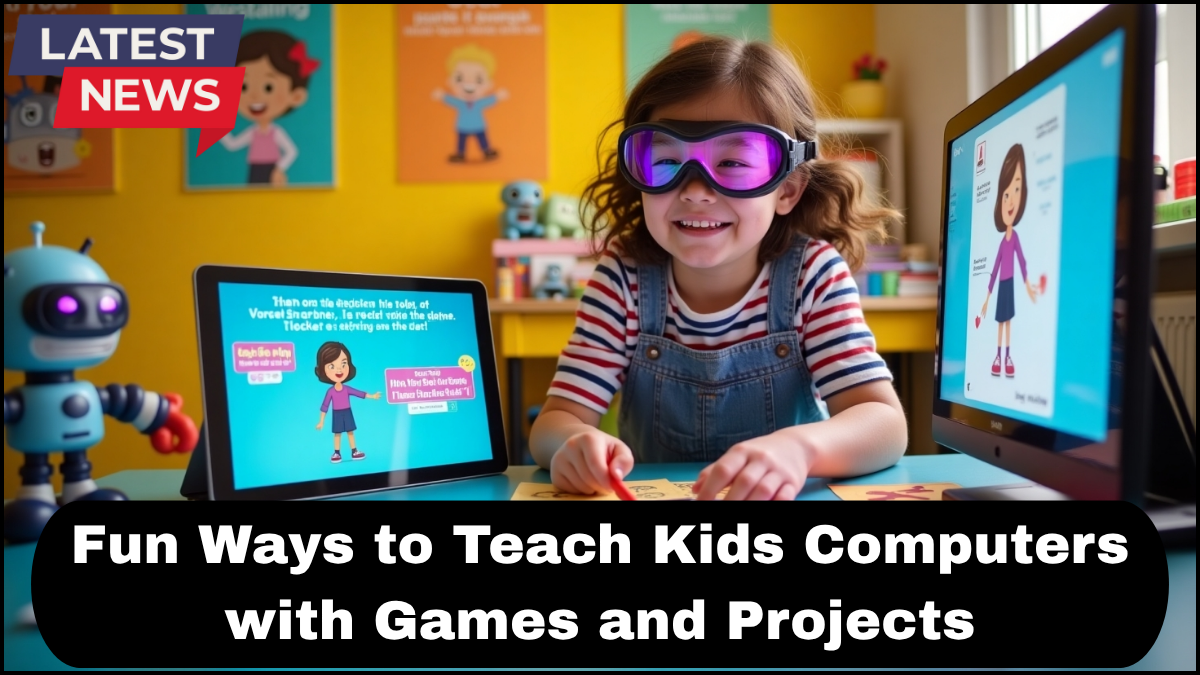Teaching kids about computers doesn’t have to feel like a lesson—it can be an adventure. By using fun computer learning for kids approaches, parents and educators can spark curiosity, build problem-solving skills, and make technology an exciting part of their world. Games, interactive projects, and hands-on challenges are some of the best ways to keep young learners engaged while helping them understand the basics and beyond.

Why Fun Learning Works for Kids
Children learn best when they are actively engaged. Fun activities trigger creativity and encourage them to explore concepts without fear of making mistakes. Instead of memorizing terms or following rigid instructions, they get to experiment—which is exactly how technology professionals work in the real world. When lessons are woven into educational computer games or imaginative projects, kids build knowledge naturally while enjoying the process.
1. Use Educational Computer Games to Build Skills
Educational computer games are more than just screen time—they’re tools for skill development. These games combine entertainment with targeted learning goals, making them perfect for introducing concepts like coding, logic, and problem-solving.
Examples:
-
Typing Adventure Games – Titles like TypeRacer or TypingClub make learning to type fun by turning it into a race or quest.
-
Logic Puzzle Games – Games such as LightBot or Human Resource Machine teach computational thinking without needing advanced programming knowledge.
-
Story-Based Games – Platforms like Prodigy wrap math or language skills in an engaging storyline, keeping kids hooked for hours while still learning.
The trick is to select games with a clear learning objective, so the fun leads directly to real skill growth.
2. Start with Beginner-Friendly Coding Projects
Coding is one of the most valuable skills in today’s world, and kids can start earlier than you might think. Beginner-friendly coding platforms make fun computer learning for kids both accessible and exciting.
Ideas for Simple Coding Projects:
-
Interactive Stories in Scratch – Kids can animate characters, add dialogues, and create their own adventures.
-
Mini Video Games – Using platforms like Tynker or Code.org, children can design games they can actually play and share.
-
Animated Greeting Cards – A simple coding challenge where kids create cards with moving text and graphics for friends or family.
These projects help kids understand logic, sequencing, and creativity—all at once.
3. Combine Computers with Real-World Activities
Blending technology with offline activities makes learning more dynamic and memorable.
Examples:
-
Digital Photography Challenge – Teach kids how to take photos, upload them, and use editing software to enhance images.
-
Design Your Own Board Game – Kids can create the artwork digitally, print it, and then play in real life.
-
Virtual Science Experiments – Use simulation tools like PhET Interactive Simulations to explore physics or chemistry concepts safely.
This combination reinforces digital skills while showing how computers fit into everyday creativity.
4. Create Group Projects to Boost Teamwork
Learning computers is even more fun when it’s social. Group projects encourage collaboration, communication, and shared problem-solving.
Group Project Ideas:
-
Build a Website Together – Assign roles like designer, writer, and coder to teach teamwork.
-
Digital Storybook Creation – Each child writes and illustrates a chapter, and the final version is published online.
-
Robotics Club – Combining coding with robotics kits lets kids bring their ideas to life.
Group activities help children learn not just technical skills but also how to work in a team—an essential ability for any future career.
5. Gamify the Learning Process
Turning lessons into challenges or competitions can make kids more eager to participate. Set up a points system, award badges for completing tasks, or host mini “hackathons” for kids to show off their skills. The sense of achievement boosts motivation and reinforces what they’ve learned.
Tips for Success in Fun Computer Learning for Kids
-
Keep sessions short and focused to match attention spans.
-
Offer choices so kids feel more ownership over what they learn.
-
Balance screen time with breaks and offline creative activities.
-
Encourage exploration—let them troubleshoot instead of giving immediate answers.
FAQs
Q1: What age can kids start learning about computers?
Many children can start as young as 4–5 years old with basic concepts like mouse control, typing, and using simple programs.
Q2: Are educational computer games better than traditional learning?
They’re not a replacement, but they’re an excellent supplement. Games keep learning interactive and can reinforce concepts in a way that textbooks can’t.
Q3: How can parents monitor safe computer learning?
Use parental controls, supervise sessions, and choose age-appropriate, secure platforms to ensure a safe environment.
Q4: Can kids learn coding without advanced math skills?
Absolutely. Beginner coding tools like Scratch or Blockly use visual blocks, making coding accessible without heavy math.
Q5: What’s the best way to keep kids motivated?
Celebrate their progress, showcase their projects, and keep the learning playful. The more they enjoy it, the more they’ll want to explore.
click here to learn more